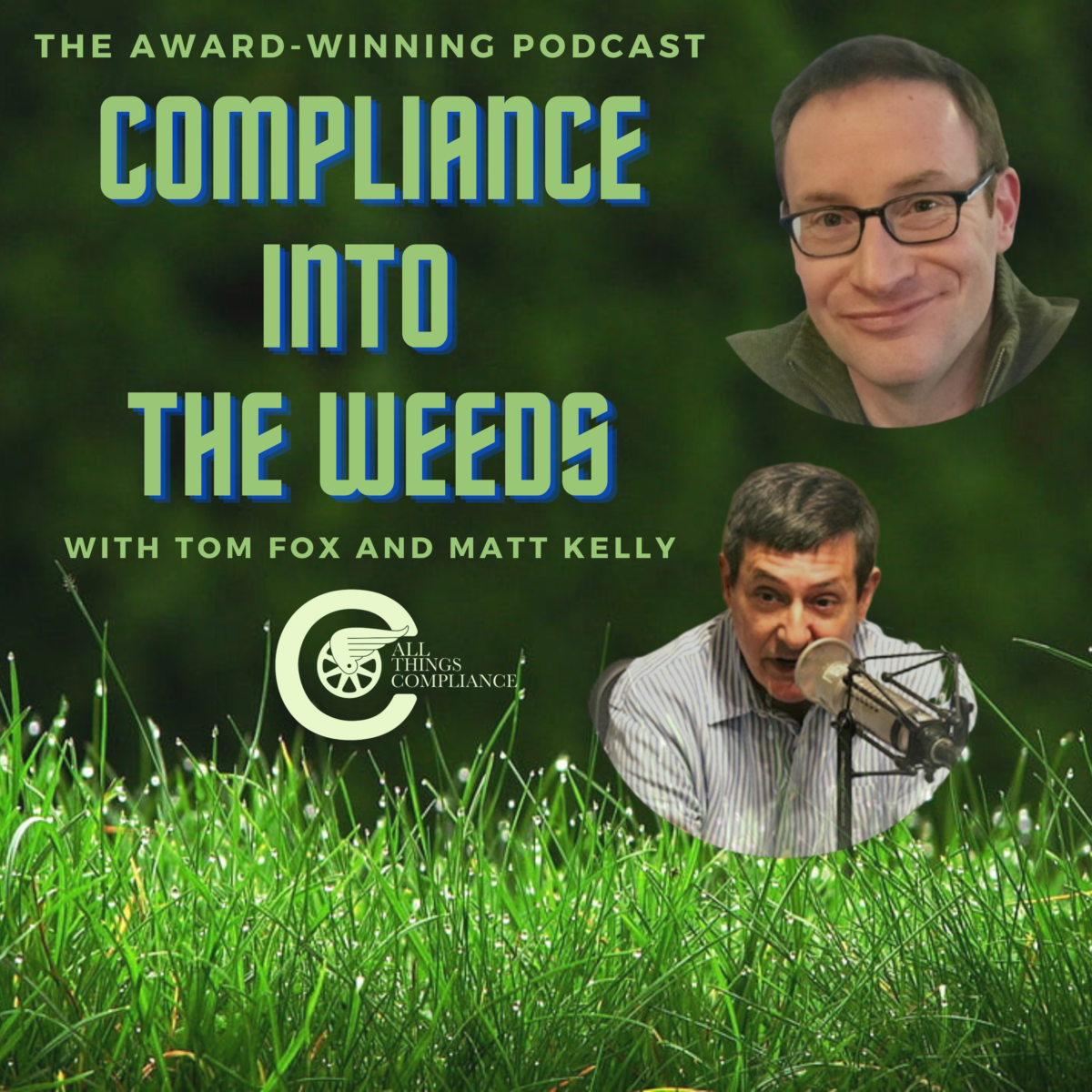The building blocks of any compliance program lay the foundations for a best practices compliance program. For instance, in the life cycle management of third parties, most compliance practitioners understand the need for a business justification, questionnaire, due diligence, evaluation and compliance terms and conditions in contracts. However, as many companies mature in their compliance programs, the issue of third-party management becomes more important. It is also the one where the rubber meets the road of operationalizing compliance. It is also an area the DOJ specifically articulated in the 2023 ECCP that companies need to consider.
The 2023 ECCP posed the following questions:
Risk-Based and Integrated Processes—How has the company’s third-party management process corresponded to the nature and level of the enterprise risk identified by the company? How has this process been integrated into the relevant procurement and vendor management processes?
Appropriate Controls—How does the company ensure there is an appropriate business rationale for the use of third parties? If third parties were involved in the underlying misconduct, what was the business rationale for using those third parties? What mechanisms exist to ensure that the contract terms specifically describe the services to be performed, that the payment terms are appropriate, that the described contractual work is performed, and that compensation is commensurate with the services rendered?
Management of Relationships—How has the company considered and analyzed the compensation and incentive structures for third parties against compliance risks? How does the company monitor its third parties? Does the company have audit rights to analyze the books and accounts of third parties, and has the company exercised those rights in the past? How does the company train its third-party relationship managers about compliance risks and how to manage them? How does the company incentivize compliance and ethical behavior by third parties? Does the company engage in risk management of third parties throughout the lifespan of the relationship, or primarily during the onboarding process?
Real Actions and Consequences—Does the company track red flags that are identified from due diligence of third parties and how those red flags are addressed? Does the company keep track of third parties that do not pass the company’s due diligence or that are terminated, and does the company take steps to ensure that those third parties are not hired or re-hired at a later date? If third parties were involved in the misconduct at issue in the investigation, were red flags identified from the due diligence or after hiring the third party, and how were they resolved? Has a similar third party been suspended, terminated, or audited as a result of compliance issues?
The key is to have a strategic approach to how you structure and manage your third-party relationships. This may mean more closely partnering with your third parties to help manage the anti-corruption compliance risk. It would certainly lead towards enabling your company to control risk while optimizing the performance of your third parties.
Amalgamate third parties but have fallbacks. It is incumbent to consolidate your third-party relationships to a smaller number to more fully operationalize your compliance program. This will make the entire third-party lifecycle easier to manage. However, a company must not “over-consolidate” by going down to a single source. You should build a diversified base, with through “dual-sourcing.” From the compliance perspective, you may want to have a primary and secondary third-party that you work with in a service line or geographic area to retain this redundancy.
Monitor any subcontracted work. This is one area that requires an appropriate level of compliance management. If your direct contracting party has the right or will need to subcontract some work out, you need to have visibility into this from the compliance perspective. You will need to require and monitor that your direct third-party relationship has your approved compliance terms and conditions in their contracts with their subcontractors. You will also need to test that proposition. In other words, you must require, trust and then verify.
Legal Protections. This is where your compliance terms and conditions will come into play. Consider a full indemnity if your third-party violates the FCPA and your company is dragged into an investigation because of the third-party’s actions. Such an indemnity may not be worth too much but if you do not have one, there will be no chance to recoup any of your legal or investigative costs. Another important clause is that any FCPA violation is a material breach of contract. This means that you can legally, under the terms of the contract, terminate it immediately, with no requirement for notice and cure. Once again you may be somewhat constrained by local laws but if you do not have the clause, you will have to give written notice and an opportunity to cure. This notice and cure process may be too long to satisfy the DOJ or SEC during the pendency of an investigation. Finally, you need a clause that requires your third-party to cooperate in any compliance investigation. This means cooperation with you and your designated investigation team, but it may also mean cooperation with U.S. governmental authorities as well.
Keep track of your third parties’ financial stability. This is one area that is not usually discussed in the compliance arena around third parties, but it seems almost self-evident. You can certainly imagine the disruption that could occur if your prime third-party supplier in a country or region went bankrupt; but in the compliance realm there is another untoward red flag that is raised in such circumstances. Those third parties under financial pressure may be more easily persuaded to engage in bribery and corruption than third parties that stand on a more solid financial footing. You can do this by a simple requirement that your third-party provide annual audited financial statements. For a worldwide logistics company, this should be something easily accomplished.
Formalize incentives for third-party performance. One of the key elements for any third-party contract is the compensation issue. If the commission rate is too high, it could create a very large pool of money that could be used to pay bribes. It is mandatory that your company link any commission or payment to the performance of the third-party. If you have a long-term stable relationship with a third-party, you can tie compensation into long-term performance, specifically including long-term compliance performance. This requires the third-party to put skin into the compliance game so that they have a vested, financial interest in getting things done in compliance.
By linking compensation to performance, there should be an increase in third-party performance. This is especially valuable when agreed upon key performance indicator (KPI) metrics can be accurately tracked. This would seem to be low hanging fruit for the compliance practitioner. If you cannot come up with some type of metric from the compliance perspective, you can work with your business relationship team to develop such compliance KPIs.
You should rank third parties based upon a variety of factors including performance, length of relationship, benchmarking metrics and compliance KPIs. This is a way for the compliance practitioner to have an ongoing risk ranking for third parties that can work as a preventative and even proscription prong of a compliance program and allow the delivery of compliance resources to those third parties that might need or even warrant them.
Auditing third parties. Critical to any best practices compliance program and an important tool in operationalizing your compliance program, this is a key way a company can manage the third-party relationship after the contract is signed and one which the government will expect you to engage in going forward.
Document review and selection is important for this process, you should ask for as much electronic information as possible well in advance of your audit. Request the following categories of documents; trial balance, chart of accounts, journal entry line items, financial and compliance policies, prior audited financial statements, bank records and statements, a complete list of agents or intermediaries and revenue by country and customer.
Regarding potential interviewees, focus on those who interact with government entities, foreign government officials or third parties, including those personnel involved with:
• Business leadership;
• Sales/marketing/business development;
• Operations;
• Logistics;
• Corporate functions such as human resources, finance, health, safety and environmental, real estate and legal
For the interview topics, there are several lines of inquiry. Remember this is an audit interview, not an investigative interview. Avail yourself of the opportunity to engage in training while you are interviewing people. The topics to interview on include:
• General policies and procedures;
• Books and records pertaining to compliance risks;
• Test knowledge of FCPA or other anti-corruption laws and their understanding of your company’s prohibitions;
• Regulatory challenges they may face;
• Any payments of taxes, fees or fines;
• Government interactions they have on your behalf; and
• Other compliance areas you may be concerned about or that would impact your company, including trade, anti-boycott, anti-money laundering (AML), anti-trust.
Managing your third parties is where the rubber meets the road in your overall third-party risk manage program. You must execute on this task. Even if you successfully navigate the first four steps in your third-party risk management program, those are the easy steps. Managing the relationship is where the real work begins.




